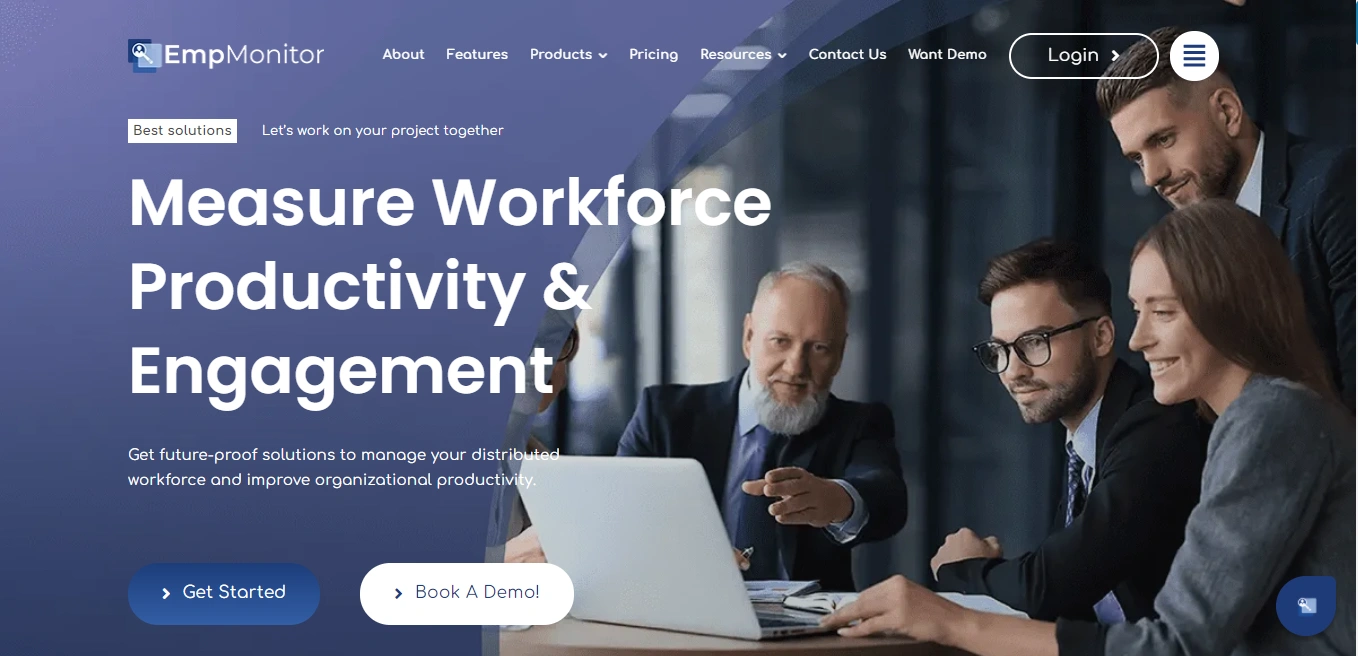Every major achievement begins with a clear, actionable plan, and short term planning transforms ambition into steady progress. Instead of feeling overwhelmed by distant goals, breaking them into smaller, focused steps leads to real, measurable results. When teams prioritize immediate actions, they build a rhythm of consistent wins that drive long-term success.
In this blog, we’ll explore what effective planning looks like, the advantages it offers, and proven methods to design and track your goals. We’ll also dive into practical examples, introduce tools to keep you organized, and share tips for maintaining strong momentum. If you’re ready to turn big ideas into achievable daily actions, this is where your journey begins.
In a hurry? Listen to the blog instead!
What Are Short-Term Plans?

The strength of short-term plans lies in their clarity and precision. Instead of feeling overwhelmed by a distant goal, you break it down into manageable steps that build steady progress. Every completed task becomes a small victory, helping maintain motivation and a sense of direction.
Moreover, short-term plans provide structure and accountability. With clear deadlines and defined outcomes, it becomes much easier to measure progress, identify potential issues early, and make adjustments when necessary. Rather than relying on hope or broad intentions, you’re working from a well-mapped strategy that keeps efforts aligned and focused.
Next, let’s explore why having strong short term planning is essential for maintaining momentum and achieving bigger ambitions.
What Are The Key Benefits Of Short-Term Plans?

Rapid Feedback
Shorter work cycles give you the ability to test ideas and measure outcomes quickly. Instead of waiting months to discover if a strategy works, you receive immediate insights. Rapid feedback allows teams and individuals to make data-driven adjustments on the go, saving time, resources, and energy. It helps you stay aligned with real-time needs rather than assumptions.
Early Confidence Boost
Achieving even minor milestones creates a ripple effect of motivation. Each finished task strengthens the belief that larger goals are within reach. This early confidence encourages teams to tackle increasingly complex challenges with a positive, proactive mindset. It also fosters a culture of achievement, where progress is celebrated regularly.
Clearer Priorities
By narrowing your focus to a handful of immediate actions, you sharpen what truly matters today. Clear priorities protect you from getting sidetracked by less important tasks. This clarity in decision-making leads to better use of time, sharper focus, and greater overall efficiency.
Strengthened Deadline Discipline
With shorter timeframes, deadlines become more meaningful. A firm end date pushes you to stay accountable, work smarter, and avoid unnecessary delays. Instead of procrastination creeping in, the urgency of the deadline drives steady, consistent effort.
More Focused Energy
Short plans reduce mental clutter. You’re not overwhelmed by the weight of distant, complicated goals. Instead, you direct your energy toward specific, achievable outcomes. Focused energy means less burnout and more satisfaction at the end of each workday.
Short Range Planning vs. Long-Term Vision

The Power of a Long-Term Vision
A multi-year vision provides a guiding star for an organization. It outlines where the company aspires to be years from now—whether that means becoming an industry leader, entering global markets, or setting new standards for innovation. These big-picture goals inspire ambition, align teams, and define the overall mission.
However, without specific steps along the way, these visions can often feel abstract or out of reach. That’s where a bridge is needed to turn dreams into reality.
Where Does Short Range Planning Fit In?
Short range planning acts as that critical bridge between lofty aspirations and actionable efforts. Instead of waiting years for results, businesses focus on tasks they can achieve immediately.
For instance, imagine a company striving to lead its market within five years. Their broad vision might include launching groundbreaking products or expanding internationally. Short-range objectives may include conducting a competitive market analysis within a month, refining customer feedback processes, or securing three strategic partnership meetings before the end of the quarter.
By breaking long-term aspirations into specific, manageable targets, teams stay motivated, organized, and focused. Every immediate accomplishment becomes a building block toward the larger mission, ensuring no day is wasted.
Examples of Short-Range Planning (One Year) Of Specific Actions the Business Will Take
Building a roadmap for one year demands more than ambition, it calls for tangible steps that create measurable impact. Short term planning transforms broad objectives into daily efforts that fuel steady growth. Let’s look at some real-world scenarios where focused actions shape long-term success.
Sales Acceleration
Objective: Boost revenue by 15% over the next year.
Action Plan: Launch monthly promotions tailored to target demographics and expand client outreach through personalized follow-ups. Sales teams will track conversion rates monthly to refine strategies in real-time.
Product Launch
Objective: Successfully introduce a new product to the market.
Action Plan: Develop a beta version within the first nine months and invite a select group of users to test it. Gather feedback systematically, adjust the product based on insights, and prepare for a full-scale launch in the final quarter.
Operational Streamlining
Objective: Increase operational efficiency across departments.
Action Plan: Conduct quarterly audits focused on identifying and removing workflow bottlenecks. Team leads will implement improvements based on audit findings, ensuring processes stay lean and responsive.
Talent Growth
Objective: Strengthen employee skills and engagement.
Action Plan: Enroll staff members in at least four professional development training sessions throughout the year. Skill acquisition will be measured quarterly through assessments, ensuring that learning initiatives translate into workplace effectiveness.
Customer Loyalty
Objective: Improve retention and build brand advocates.
Action Plan: Create and roll out a comprehensive rewards program. Track customer churn and engagement rates monthly, fine-tuning the program based on participation levels and feedback.
Each of these examples shares a common thread: a clear timeline, specific milestones, measurable outcomes, and accountable ownership. That’s what turns short range planning into a powerful driver of year-over-year growth.
What Are The Core Short Term Strategies For Success?

Apply the SMART Framework
Effective short term planning thrives on clarity. Every goal you set should be Specific, Measurable, Achievable, Relevant, and Time-bound. The SMART framework ensures that your objectives aren’t vague or overwhelming.
Instead, they become actionable steps you can realistically achieve within a set period. By adding this structure to your planning, teams work with a clear understanding of what needs to be done and when, reducing confusion and boosting accountability.
Connect Daily Actions to Larger Goals
Short term planning isn’t about checking off random tasks—it’s about moving intentionally toward larger objectives. Every task should serve a bigger purpose, whether it’s improving customer satisfaction, streamlining internal operations, or boosting revenue. When team members understand how their daily work contributes to major outcomes, they’re more motivated, engaged, and focused.
Prioritize Quick Wins
Nothing builds momentum like early successes. When planning for the short term, focus on easy tasks that provide significant progress. Quick wins don’t just provide an emotional boost; they also validate your strategies and encourage faster iteration. Small victories fuel enthusiasm and create a positive cycle of achievement that carries into more complex initiatives.
When you adopt these smart methods to shape your short term planning efforts, you’ll find that each cycle builds on the last. Progress compounds, confidence grows, and big-picture success becomes more tangible with every step forward.
As you strive to execute your short term strategies effectively, advanced employee monitoring and productivity tracker tools like EmpMonitor can help you track progress, optimize team productivity, and ensure you’re always on the right path toward achieving your goals.
How EmpMonitor Enhances Short Term Planning?

Designed to help businesses manage and optimize their workforce, EmpMonitor empowers you to track performance, identify productivity gaps, and ensure every team member is aligned with your goals. Short term planning focuses on achieving immediate results, and EmpMonitor offers tools to ensure those results are measurable and actionable.
Streamline Task Management
Short term planning requires clarity and focus. EmpMonitor, as a leading workforce management software, helps businesses assign and track tasks effectively. Whether a simple task or a more complex project, you can easily monitor your team’s progress, ensuring that every goal is met on time.
It ensures that tasks are completed & completed efficiently, making short-term goals easier to achieve.
Boost Productivity and Accountability
With EmpMonitor, you gain insights into how your team is spending their time. As a comprehensive employee management software, it helps identify areas where you can optimize productivity.
Real-time data and reports enable managers to adjust resources and priorities, ensuring that short-term plans stay on track and your team remains accountable. It allows for better decision-making, improving overall efficiency.
Data-Driven Decision Making
EmpMonitor’s comprehensive reporting features provide in-depth analysis, helping you make informed decisions about your team’s performance. By having access to real-time data, you can quickly assess whether your short-term plans are working or if adjustments need to be made. It makes it easier to adapt strategies quickly, keeping your team aligned with short-term goals and ensuring long-term success.
Foster Team Collaboration
Successful short term planning isn’t just about individual tasks, it’s about fostering collaboration. With EmpMonitor, team members can easily share progress, updates, and feedback. This collaborative approach accelerates progress & ensures that everyone is on the same page as you work toward achieving your short-term objectives.
EmpMonitor fosters this collaboration through its intuitive features, strengthening your team’s ability to work together and deliver results.
By incorporating EmpMonitor into your short term planning process, you gain the tools needed to enhance efficiency, improve tracking, and drive accountability across your team. With a strong workforce and employee management features, you can surpass your short-term goals and advance toward your long-term vision with each milestone.
What Are The Steps To Build Your Short-Term Plan?

1. Define the Objective
Every successful short-term plan starts with a crystal-clear objective. The first step is to identify exactly what you aim to achieve in a set timeframe. Short-term planning is focused on specific, measurable outcomes that are achievable within weeks or a few months.
For example, your objective could be improving customer service by reducing ticket resolution time by 30%. The clearer the goal, the easier it is to design the path forward and ensure your efforts align with the desired result.
2. Break It Down
Once your objective is clear, break it down into smaller, actionable tasks. It is where the real work begins, as you’ll identify the individual steps required to achieve the larger goal.
For example, if your goal is to reduce ticket resolution time, some tasks might include configuring helpdesk software, training support staff on new procedures, or creating an FAQ section to expedite resolution.
Each task should be clearly defined, actionable, and assigned a timeline. When tasks are broken down into smaller chunks, they feel more achievable and easier to tackle.
3. Assign Owners and Dates
Setting deadlines and designating responsible individuals for each task is a key element in successful short term planning. By assigning ownership and due dates, you create accountability and structure.
It helps ensure that tasks stay on track and that the team understands their role in achieving the larger objective. For example, one team member might be in charge of configuring the helpdesk software, while another could be responsible for staff training. These clear designations, along with realistic deadlines, ensure that the project progresses steadily toward the goal.
By following this simple blueprint, you turn lofty ambitions into daily commitments, making big wins more attainable. When each small step is defined, assigned, and tracked, progress becomes measurable, and the success of your short-term plan is guaranteed.
Read More
How To Achieve Big Dreams Through Long Term Planning?
Conclusion
In conclusion, short term planning is a powerful tool that helps transform ambitious goals into achievable actions. By breaking down larger objectives into manageable tasks, teams can maintain focus, build momentum, and consistently make progress. The benefits, such as rapid feedback, early confidence boosts, and clearer priorities, empower individuals and organizations to stay on track and adapt quickly to changing circumstances.
Combining the SMART framework with tools like EmpMonitor boosts efficiency and accountability, ensuring every action leads to measurable results. Whether you’re aiming for short-term wins or long-term success, effective planning is the bridge that connects your aspirations to reality, one small victory at a time.
FAQs On Short Term Planning
- How often should I review my short-term plan?
Short-term plans should be reviewed regularly, ideally at the end of each week or month, depending on the timeline. This allows you to assess progress, make adjustments if needed, and ensure you’re staying aligned with your goals.
- Can short term planning help improve team collaboration?
Yes, short term planning fosters team collaboration by setting clear objectives, assigning roles, and encouraging regular communication. It helps teams work together toward shared goals, improving productivity and cohesion.
- What role does flexibility play in short term planning?
Flexibility is crucial in short term planning. While it’s important to set clear goals and deadlines, being adaptable allows you to adjust to unforeseen challenges or new opportunities, keeping your team on track without losing momentum.
- How can I ensure my short-term plan remains realistic?
To keep your short-term plan realistic, ensure that the goals are achievable within the set timeframe and that resources are appropriately allocated. Regularly assess your progress and adjust the scope or timeline to avoid overwhelming your team.
- What are some common mistakes to avoid in short-term planning?
Some common mistakes include setting vague or unrealistic goals, neglecting to break tasks into manageable steps, and failing to assign clear ownership. It’s also important to avoid ignoring feedback or not tracking progress, as both can lead to missed opportunities for improvement.











